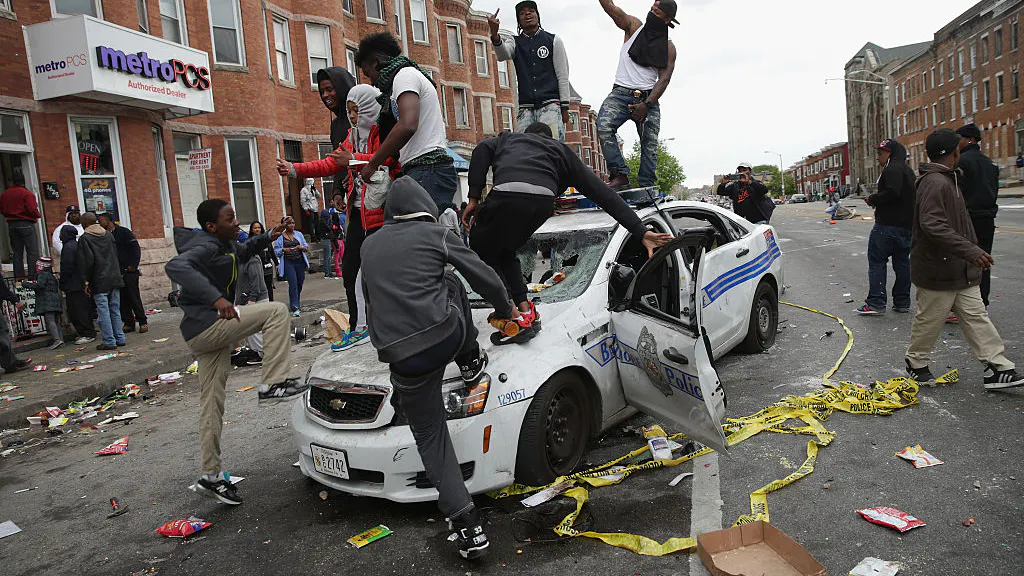In the aftermath of George Floyd’s death, many Democratic politicians and left-wing activists began demanding that elected officials “Defund the Police.” Many of the cities that followed through with such proposals are today witnessing sharp increases in violent crime.
Portland
Mayor Ted Wheeler of Portland spearheaded an effort in June to “increase police accountability and reinvest in black and brown communities.” He proposed over $7 million in shifts from the police bureau, which included dissolving the city’s Gun Violence Reduction Team in favor of seeking ways to “fundamentally re-shape” shooting prevention.
Portland — where rioters recently established the “Red House Autonomous Zone” — almost immediately witnessed a jump in shootings. Though year-to-date shootings had risen 10.8% by May, the months of June, July, August, and September witnessed 96.8%, 186.1%, 195.1%, and 243.8% hikes respectively.
New York City
The nation’s largest city announced $1 billion in cuts to the NYPD’s spending in late June. The city slashed two of the NYPD’s four training classes, reducing officer headcount by nearly 1,200.
In addition to shifting money toward summer camps, food security, and social services, the city tossed $1.8 million toward LGBTQ curriculum at its Department of Education, $20.2 million toward “culture and the arts,” and $11.9 million toward libraries.
In June — the month before the city’s announcement — the number of citywide shooting incidents had increased by 130% since the previous year. However, in July and August, shootings started rising sharply, reaching 177% and 166% year-over-year increases respectively.
According to Christopher Herrmann, a former Crime Analyst Supervisor with the NYPD, “we normally see a 30% increase in shootings in the summer. This year it was a 150%, 180% increase. It was just out of control.”
Austin
Austin’s city council voted unanimously to slash its police department budget by $150 million — 34% of its $434 million budget — in August of 2020. The plan immediately reinvested $21 million into mental health response, supportive housing, and victim services. It also threw $100,000 toward “abortion services.”
Shortly after, Austin watched its murder rate start to climb in comparison to previous years. In September, murders increased by 40% compared to the same point in 2019. In October, the increase jumped to 54%. Though it may be too early to tell if the trends will sustain themselves, Austin also saw increased rates of burglary, aggravated assault, and statutory rape, among other crimes.
Seattle
In August, Seattle’s city council voted to slash its police budget by 14% for the remainder of 2020. The measure effectively served to eliminate 100 officers, prompting police chief Carmen Best to resign. Only one of Seattle’s eight council members voted against the proposal, stating that the cuts did not go far enough.
Seattle — the former home of the “Capitol Hill Autonomous Zone” (CHAZ) — nevertheless maintained its spike in violent crime since last year. In 2019, the months of August, September, and October witnessed 1,207 violent crimes. In 2020, the figure rose to 1,315 — a 9% increase.
Los Angeles
In June, the nation’s second-largest metropolitan area approved a $150 million cut to its police department for the next fiscal year. Vice presidential nominee Kamala Harris applauded the decision, stating that the mentality of putting more police officers on the streets to increase safety is “just wrong.”
As compared to last year, shootings in Los Angeles are up by 34.1%, murder is up by nearly 30%, and aggravated assault is up by 8.3%, according to the LAPD’s most recent crime statistics.
Benjamin Zeisloft is Editor-in-Chief of the UPenn Statesmen and a Senior Correspondent for Campus Reform.
The views expressed in this opinion piece are the author’s own and do not necessarily represent those of The Daily Wire.

Continue reading this exclusive article and join the conversation, plus watch free videos on DW+
Already a member?

.png)
.png)

